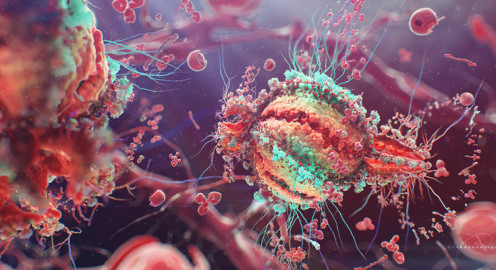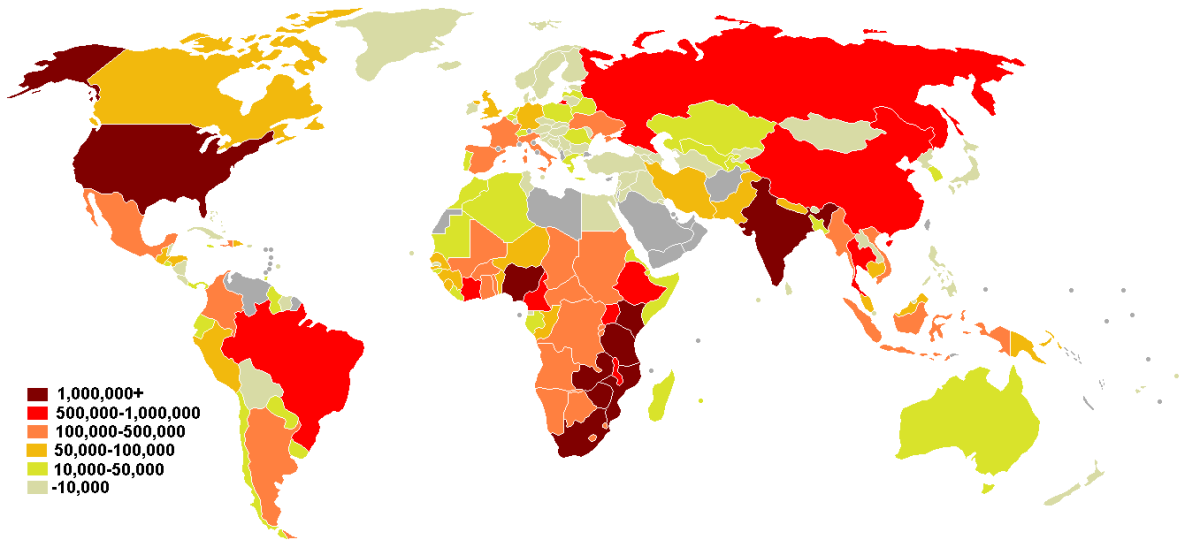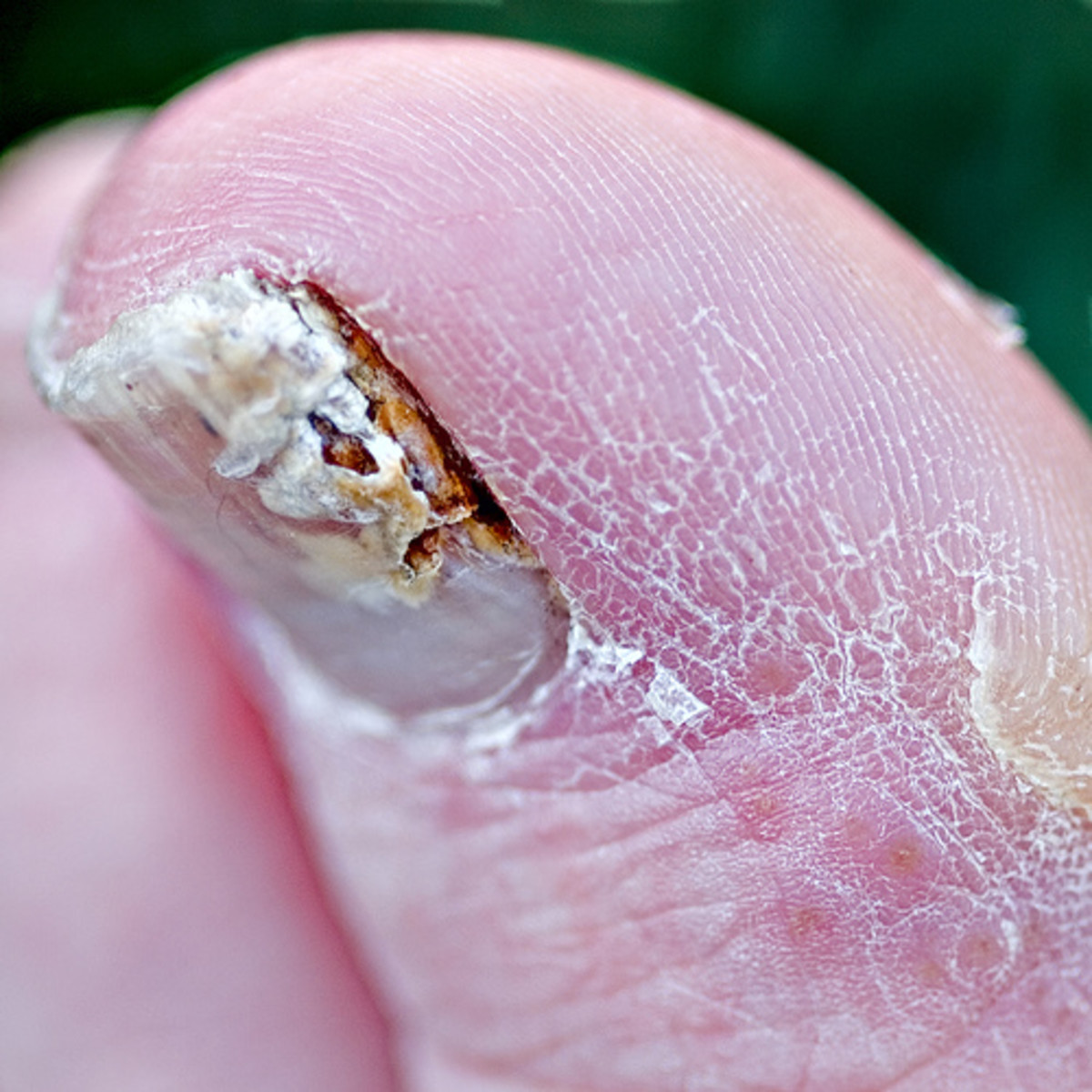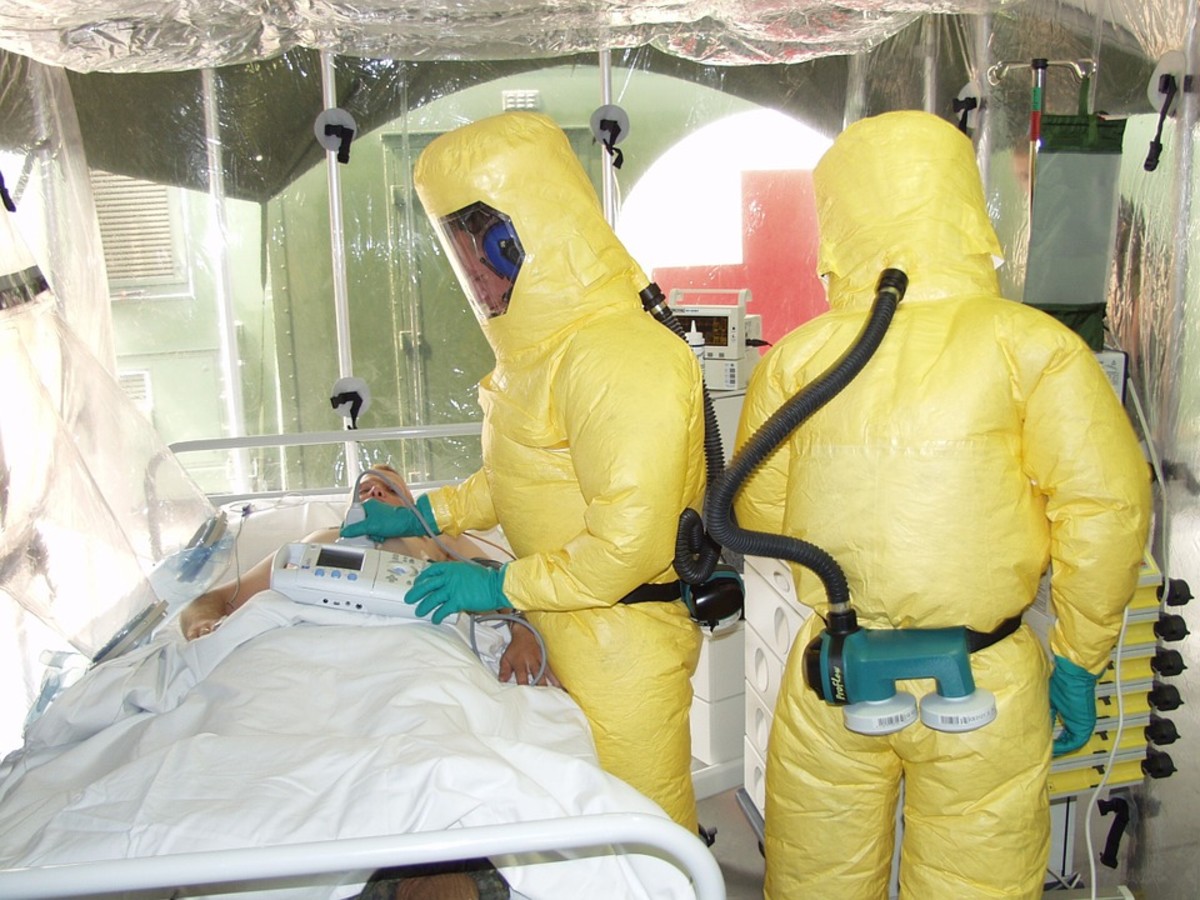HIV and AIDS – Clinical and Social Perspectives

What is AIDS?
The HIV (Human Immunodeficiency Virus) causes potentially fatal disease of AIDS (Acquired Immunodeficiency Syndrome). This life threatening condition invades and diminishes the efficiency of human immune system resulting in the increased risk of opportunistic infections to the surviving host. HIV is a retrovirus, with RNA genome that acts as a template for producing the complementary DNA to incorporate into the DNA of the infected individual. The French physician Luc Montagnier discovered this deadly virus at the Pasteur Institute in 1983. HIV also recognized across the globe as Lymphadenopathy-Associated Virus (LAV) or the Human Lymphotrophic Virus type III (HTLV). The clinical manifestations of AIDS include Pneumocystis Carinii Pneumonia (PCP), Mycobacterium Avium-Intracellulare (MAI) sepsis, Cerebral Toxoplasmosis and Kaposi’s sarcoma. The biggest challenge in the treatment of AIDS is the development of resistance against the antiretroviral drugs and the adverse reactions after the continued application of the treatment regimen. HIV is classified into HIV-I and HIV-II strains, and the incidences of HIV-II infections reported majorly in West Africa, parts of Indian Subcontinent, Potugal and France. However, HIV-I type is the most prevalent strain across the globe.
The Centers for Disease Control and Prevention (CDC) initially measured AIDS in accordance with the occurrence of cancers and opportunistic infections leading to an impaired immune system in the infected humans. According to a scientific hypothesis, the hunters in Africa (that ate monkeys infected with African Monkey Virus) invaded by the pathogen that mutated itself inside the human host leading to the transformed Human Immunodeficiency Virus.
History
The initial appearance of AIDS (in 1959) reported in Democratic Republic of Combo. AIDS pandemic extended in mid to late 1970s and disseminated further to the regions of Africa, Australia, Europe and South America until 1980s. Although the disease gained recognition during the decades of 1970 and 1980, its causative organism (HIV) identified at a later stage. Centers for Disease Control and Prevention (CDC) reported 452 cases of AIDS from 23 states until the beginning of July 1982. The physicians at the Institute Pasteur in France claimed to isolate the causative agent of AIDS in May 1983. China reported the first case of AIDS in 1985 and by the end of same year 20, 303 AIDS cases reported to World Health Organization from across the globe.
UNAIDS (Joint United Nations Program on HIV/AIDS) declared (in 2007) that more than 33 million people in the world were infected with HIV and the death toll raised to 2.1 million. According to an estimate, 6800 people infected with HIV daily; however, the mortality rate accounts to 5700 of the infected patients. AIDS affected the lives of 35 million people by 2009; however, the death toll since 1981 crossed 25 million of the diseased patients.
Demographics
The CDC’s statistical analysis maintains that 56, 300 people from the United States acquire HIV infection per year. The CDC also published in 2010 that 50% of the infected population across areas of AIDS epidemic pertain to men. The disease has progressed rapidly in the regions of Africa, America and Asia since its onset until date. There has been an increase in the events of women infected with AIDS in the recent years according to a survey by CDC. The healthy individuals become risk prone by needle sharing and physical activity. The ethnic minorities of blacks, Hispanics, American Indians, Asian Islanders and Alaska Natives are more vulnerable to the HIV infestation.
Transmission
HIV transmitted through contact (of mucous membrane of the body openings) with the body fluids (i.e. blood, semen, breast milk, pre-seminal, rectal and vaginal fluids) of the infected patients. The common routes of its acquisition include the following:
1. Anal and Vaginal Actions
Open physical relations initiate the transfer of the viral pathogen to the healthy individuals. This may also result in the passage of other STD infections enhancing the risk or severity of the disease with the development of genital ulceration in the infected patients. These acts highly increase the risk of HIV transmission from the diseased population. The receptive partners in both vaginal and anal actions remain at increased risk of developing the disease. The transmission of HIV infection is reportedly more efficient in women rather than their men counterparts. Consistent physical activity with multiple partners increases the risk of HIV transmission.
2. Transplacental and Perinatal Transmission
The HIV infected mothers are likely to transmit this pathogen to their babies. The passage of virus occurs inside the uterus or during breast-feeding after birth. Prophylactic measures including antiretroviral therapy, cesarean delivery and lack of breast-feeding helps in protecting the developing fetus from attaining the invading pathogen.
3. Contaminated blood, blood products, organ transplants and needles
The patients receiving infected blood products, transfusions and transplants remain prone to the risk of acquiring AIDS. The probability of viral dissemination through blood transfusions or organ donations is high in those geographical locations, where no screening of blood products and tissues performed for transfusion or transplants. Similarly, the deadly pathogen may also be transmitted by the infected needles or syringes used for intravenous administration of drugs. The needles may become infected due to their sharing or reuse in multiple patients without adopting adequate sterilization procedures.
4. Oral Action
Receiving penile ejaculation in mouth increases the risk of viral transmission from the infected patient.
5. Deep Open Mouth Kissing
The HIV patient with bleeding gums or dental sores may possibly spread infection through deep or open mouth kissing to the healthy individual. However, such instances of viral transmission reported very rarely.
Etiology and Pathogenesis
The HIV infection begins its course with the onset of acute illness and an ill-defined incubation period characterized by minimal symptoms in the affected individual. The load of HIV affects the T lymphocytes causing gradual suppression of patient’s immune system resulting in diminishing the count for the CD4 cells. The host DNA incorporated with the proviral genome resulting in the latent infection. The viral invasion in the host cells results in the development of anti HIV antibodies within the first six months of disease progression.
AIDS refers to the advanced stage of HIV infection. The diagnosis of AIDS perceived clinically after tenure of 5-10 years in adults and 2 years in children following the initial HIV exposure.
Symptoms
HIV infection may propel with the absence of symptoms to progressive generalized lymphadenopathy, fatigue, night sweats, diarrhea, weight loss, fever and other associated infections.
AIDS Related Complex (ARC)
The patients of ARC suffer from persistent generalized lymphadenopathy followed by lymphocytes depletion. The lymph nodes of the infected patients are proliferated by HIV that can be isolated for confirming the clinical diagnosis of ARC.
AIDS
AIDS defined clinically as the advanced stage of HIV infestation marked by the development of several opportunistic infections in the affected host. These severe infestations include the following conditions:
- Cytomegalovirus infections
- Atypical mycobacterial infections
- Pneumocystis carinii pneumonia
- Esophageal candidiasis
- Kaposi’s Sarcoma (malignant vascular cancer of the skin and internal organs)
- Lymphoma of brain
- Lymphoma of cervix
- Invasive carcinoma of cervix
- Toxoplasmosis of the brain
- Cryptosporidiosis (diarrhea) of the intestine
- Herpes simplex infections, and
- Papovavirus infection of the brain (progressive multifocal leukoencephalopathy)
- Candidiasis
- Cryptcoccosis
- M avium intracellulare complex infection
- HIV encephalopathy
- HIV wasting syndrome
- Otitis Media (recurrent bacterial)
- Skin Infections (recurrent bacterial)
- Coccidioidomycosis (recurrent bacterial)
- Histoplasmosis (recurrent bacterial)
- Isosporiasis (diarrhea) (recurrent bacterial)
- Tuberculosis (recurrent bacterial)
- Salmonella septicemia (recurrent bacterial)
Diagnosis
HIV does not spread by insects, casual contact (including sharing utensils, hugging or shaking hands), toilet seats, saliva, tears, sweet, air or water. However, HIV may be isolated from the patient’s genital fluids, breast milk or blood.
According to the revised classification of CDC, HIV or AIDS diagnosis depends on the following parameters:
Lab Test(s)/Indicator(s)
| Finding(s)
| Diagnosis
|
|---|---|---|
HIV Antibody Test
| Positive
| HIV Infection
|
CD4 count
| ≥500/µL + Positive HIV Antibody Test
| HIV Infection
|
CD4 count
| 200-499/µL + Positive HIV Antibody Test
| Pre-AIDS and ARC (AIDS-Related Complex)
|
CD4 count
| <200/µL + Positive HIV Antibody Test
| AIDS
|
AIDS Indicator Diseases
| Present + Positive HIV Antibody Test
| AIDS
|
AIDS Indicator Diseases
| Present
| Presumptive AIDS
|
ELISA Test
| Antibodies to HIV Proteins
| HIV Infection
|
Western Blot
| HIV Proteins
| HIV Infection
|
HIV Culture
| Live Virus
| HIV Infection
|
P-24 Antigen Essay
| Positive Viral Antigen
| HIV Infection
|
Polymerase Chain Reaction (PCR Essay)
| Positive HIV Nucleic Acid
| HIV Infection
|
Prophylaxis
The effective vaccine or therapeutic regimen to cure HIV and AIDS is still under the way to clinical trials. However, the currently followed preventive measures include creating public awareness regarding the onset and transmission of HIV and AIDS. Some of the preventive techniques to decrease the risk of HIV transmission include the following:
- Safe measures with the use of condoms.
- Safe needle disposal techniques and fluid proof masks, gloves and gowns by the healthcare workers.
- Adequate disinfection procedures in health care settings.
- Adopting alternative routes of specimen collection and treatment delivery to minimize the use of needles in the health care facilities.
- Use of disposable syringes to render the intravenous or intramuscular medication.
- Utilizing unique devices with injury prevention features (like hypodermic needles and blood collection equipments) in clinics and hospitals.
- Post exposure prophylaxis based on the antiretroviral treatment to minimise the risk of HIV infection after potential exposure of the viral pathogen
- Pre-exposure prophylaxis is helpful for those individuals who bear the risk for attaining HIV infection. Such people include the health care workers or scientists handling the body fluids and blood specimens almost on a daily basis. Similarly, couples who do not practice monogamous relationships with their partners and drug addicts may benefit by such prophylactic measures. These practices include rendering drugs, repeat HIV tests and prescription refills for the risk prone population.
- Undergoing male circumcision procedure reduces the risk of HIV dissemination from the infected female partner. Additionally, it marks a check on other STDs including, urinary tract infections and penile cancer.
- Use of obstructions like non-lubricated condoms and natural rubber latex sheets during oral activity the risk of transmission of HIV pathogen to a considerable extent. However, the risk is further minimized if the healthy partner undergoes pre-exposure prophylaxis medication to cease the HIV transmission.
Social Dilemma
Impoverished provinces of the developing countries remain influenced by misconceptions due to less awareness about HIV and AIDS. The ethical perspectives require understanding and implementation while dealing with the HIV infected seropositivities. Appropriate counselling sessions are required for HIV infected individuals to help them develop resistance for withstanding against the incurable illness. AIDS infected people tend to become alcoholic or drug addicts with the gradual depletion of their immune system. With lack of awareness about the disease, they are isolated and mistreated by society leading to severe mental complications that consistently hinder management of HIV complications in the infected population.
The AIDS infected people report high incidences of psychiatric co-morbidities including depression, inattention, substance abuse, cognitive and psychotic illnesses. Such associated conditions adversely influence the patients’ immune system, thereby decreasing the survival rates and proportionately increasing mortality in the diseased population.
AIDS awareness campaigns are required throughout the globe to disseminate awareness regarding prophylactic and preventive measures for challenging the progression of HIV infection. AIDS affected patients suffer from prejudice, fear, discrimination and ostracism in society. International laws need necessary amendments and appropriate measures undertaken to reduce the social sufferings of the HIV infected population.
Treatment
AIDS treated symptomatically and with anti-retroviral standard therapy. However, there is no definite cure of HIV infection until date. Clinical trials are on their way to explore an effective vaccine and treatment regimen for delivering a permanent cure against the lethal disease. Traditional and Alternative Medicine claims remedies for delivering symptomatic relief to the diseased individuals. The treatment enhances the immune system and helps developing weight gain, combating hypovitaminosis and pain control in HIV infected subjects. The herbal remedies may also prove effective in rendering permanent cure to the associated infections like Candida albicans. Alternative therapy is also useful in antagonizing the side effects of HIV standard treatment regimen. The use of fish oil helps to control increased blood cholesterol levels with the continued use of antiretroviral drugs in HIV patients. Whey or milk serum proteins work as anti-diarrheal drugs and enhance the CD-4 counts in the HIV affected population. The herbs like Prunella vulgaris and Gnaphalium polycephalum believed to render longevity and enhance the energy levels of the immunocompromised patients. Licorice root is under clinical trials for its potential sedative effects and properties to cure haemophilia and hepatitis C complications of HIV infection. Herbal supplements including Hyssopus officinalis, St. John’s Wort and Garlic are under clinical investigation for their remedial actions in reducing cough, dry throat, depression and immune modifying properties. However, to avoid ethical dilemmas, it is essential for clinicians to explain the patients regarding potential benefits and risks associated with various HIV treatment options prior to initiating them in the diseased population.








